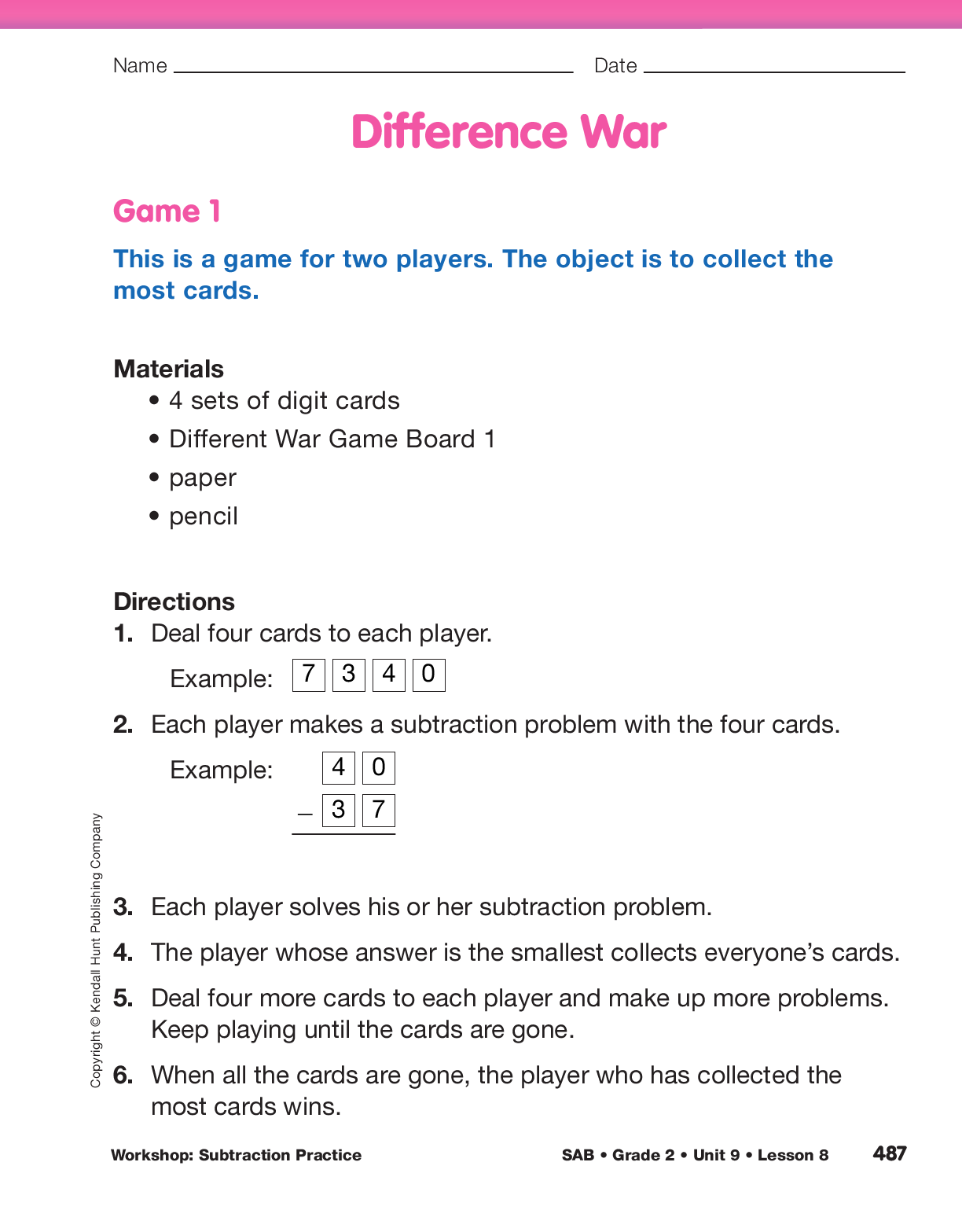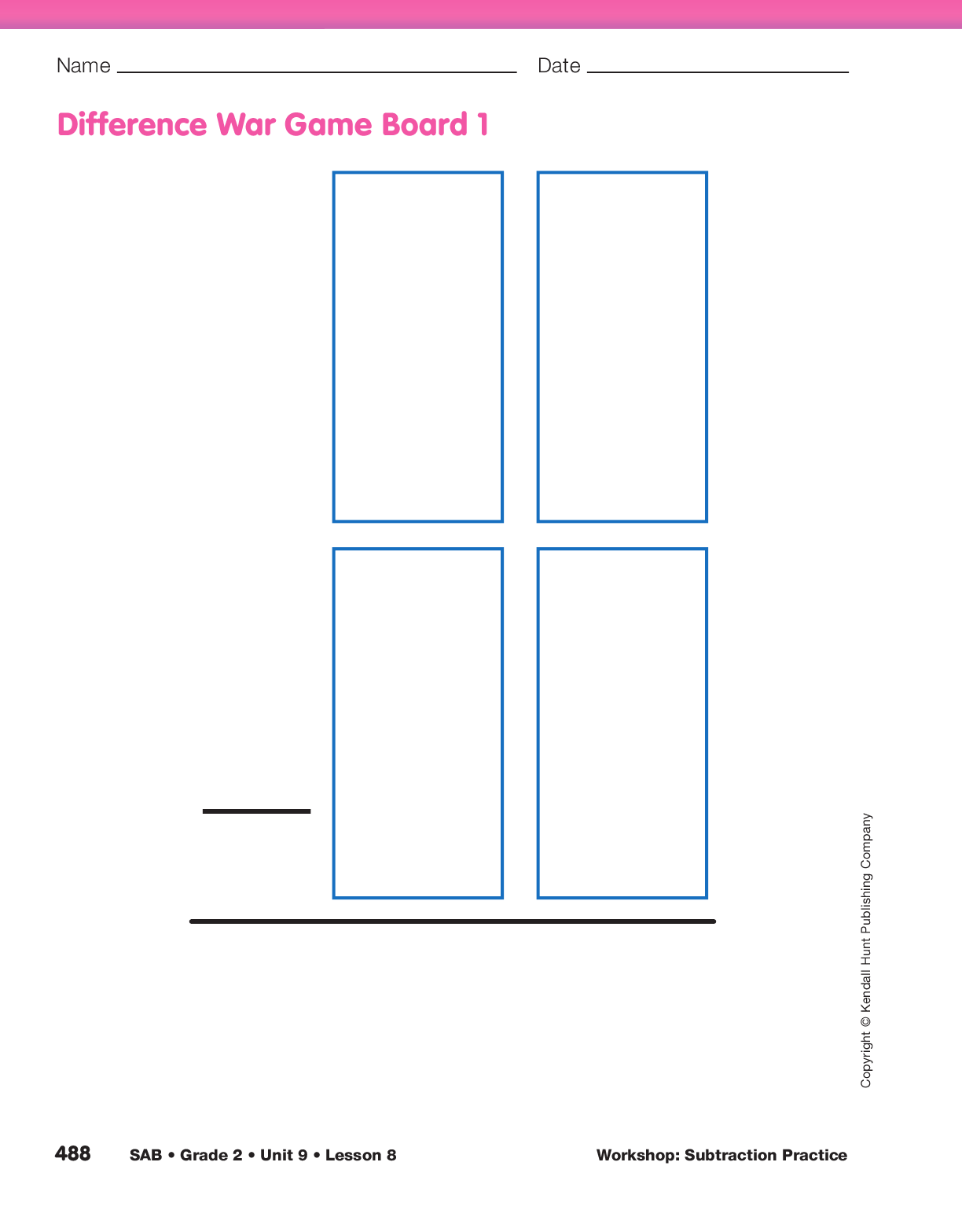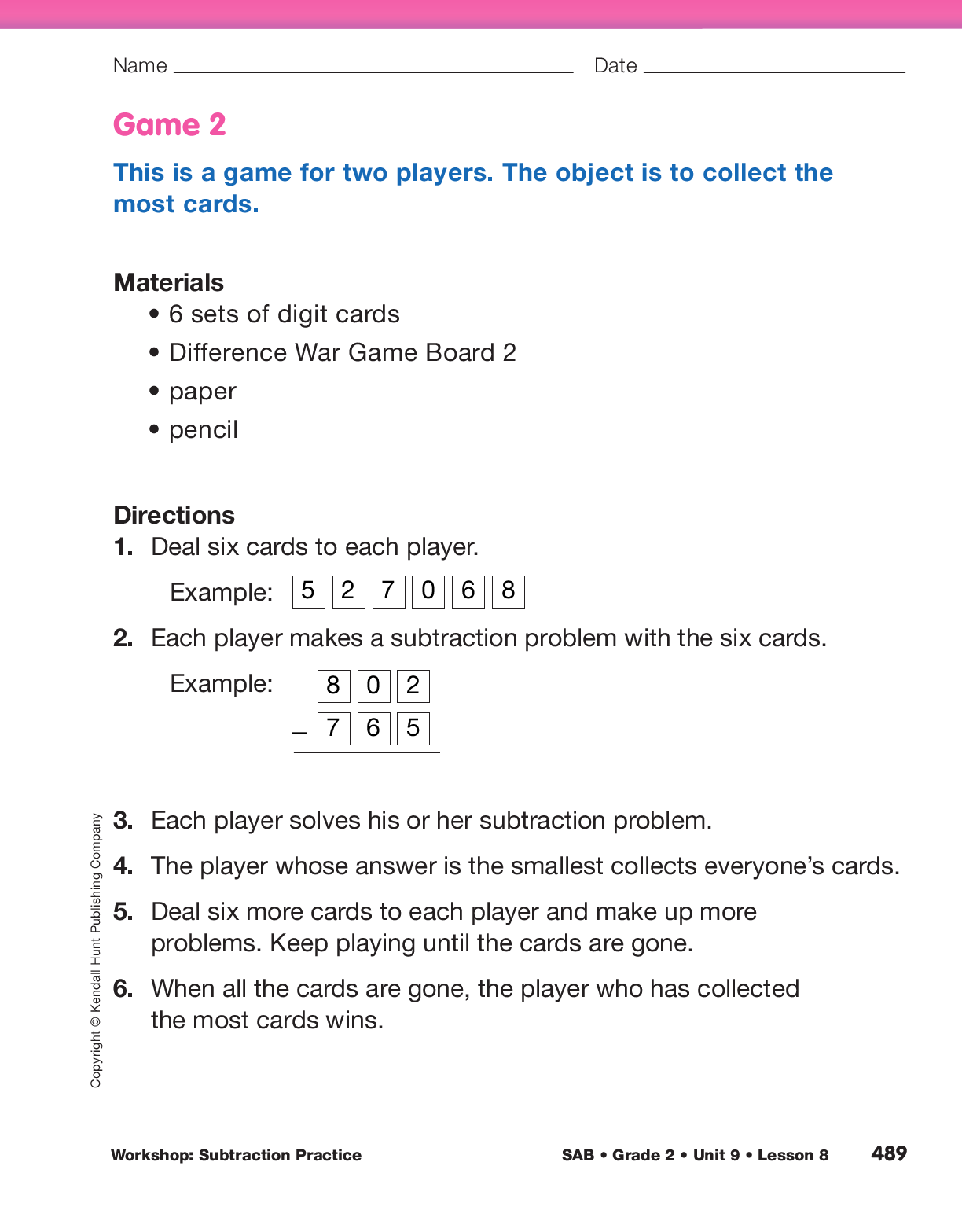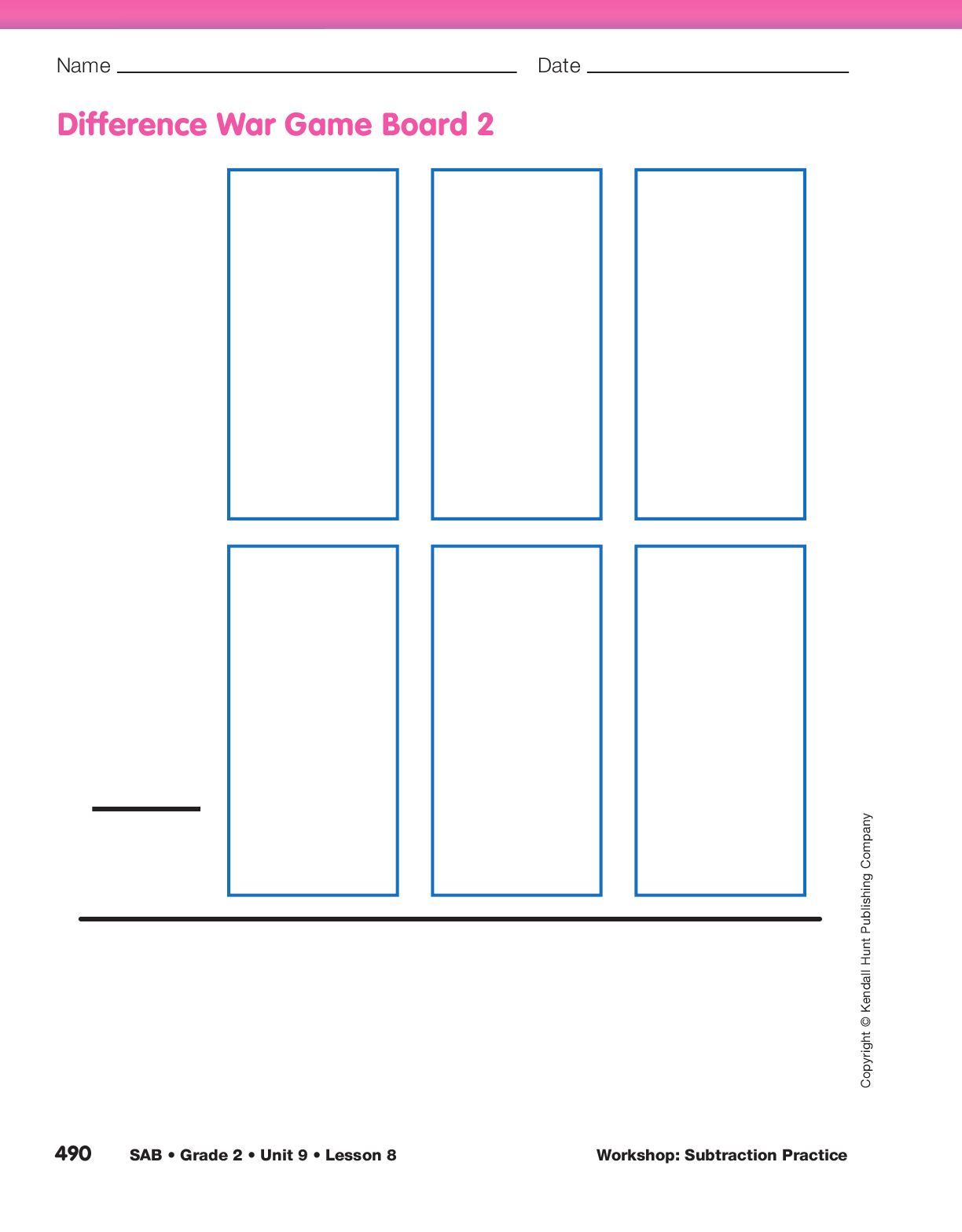Workshop: Subtraction Practice
Est. Class Sessions: 2Developing the Lesson
Part 3: Difference War
Introduce Difference War. The Difference War
game in the Student Activity Book provides more
subtraction practice and reviews place value.
Introduce the game by displaying the
Game 1
section and having two students play the game in
front of the class. Remind students that a difference
is the answer to a subtraction problem.
Each player is dealt four cards and constructs a subtraction problem with all four of the cards. Students may use the Difference War Game Board to organize their problems. Whichever player has the smallest difference collects all the cards. Four more cards are dealt to each player and play continues as before. Whoever has collected the most cards when all the cards have been played is the winner.
Janice and Terry were dealt the cards pictured in Figure 4. Janice constructed the problem 40 − 37. Terry constructed the problem 51 − 49. Terry’s problem leaves the smallest difference so Terry wins the hand and keeps all eight cards.
Tell students to take out their Subtraction Practice Workshop Menu page. Students will choose which Difference War game they will play. To help students choose between the two versions, explain that Game 1 involves constructing and subtracting 2-digit numbers. Game 2 involves constructing and subtracting 3-digit numbers. Both games can be found in the Student Activity Book. Sample problems are on the menu.
Ask students to choose and circle one of the games
in the last column of the menu. Then organize students
to play Game 1 or Game 2 in groups of
two players. Have tools such as the
200 Chart, number
lines, and base-ten pieces readily available.
Remind students that they can refer to the
Subtraction Strategies Menu in the Student Activity
Book Reference section as they work and play the
games.
As students play, observe their methods for finding differences. Encourage students to discuss the problems, to help one another, and to verify their answers by adding.
After playing several games, ask students to describe winning strategies.
Ask:


















